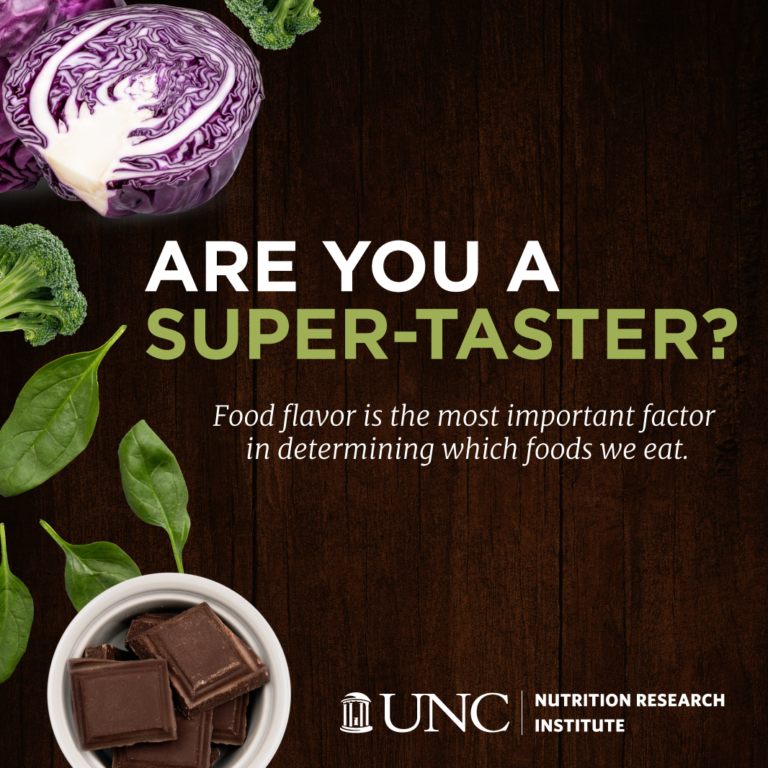Nutrigenetics and -genomics are the sciences examining the interplay of our genes and how nutrition works in our bodies. While complex, these concepts are sometimes easily illustrated by such means as simple test strips of specially treated paper placed on the tongue. These can indicate if a person is genetically sensitive to certain flavors and therefore limiting their intake of some foods.
Food flavor is the most important factor in determining which foods we eat. We don’t actually sense flavor. It is created by our brain based on what we taste and smell. Taste is built into genes – smell is learned.
There are 5 tastes: sweet, salty, sour, bitter, umami (savory, meaty taste). Taste is believed to have evolved to improve chances of survival. It is sensed through special receptors on our tongue that send messages to our brain.
Taste buds contain 50-150 of these receptors. The taste bud is a dynamic system in which new taste cells are continually being born, maturing, performing their sensory functions, eventually going into senescence, and ultimately dying – all within a period of from 10 days to 30 days. As we age, the number of receptors decline.
There are genetic differences in taste with some people being extremely sensitive to bitter making them “super-tasters,” who account for roughly 25% of the population. People who perceive little to no bitter are referred to as “non-tasters” (25 to 30%). Everyone else falls between these extremes.
Studies show that genetic variation in taste perception can affect food preference, diet, and health (including potential risk factors for colon cancer, body mass index, cardiovascular profiles, and even alcoholism).
Example of Foods by Taste
| Sweet | Salty | Sour | Bitter | Umami |
| Fruit | Ham | Lemon | Brussels Sprouts | Beef |
| Honey | Olives | Vinegar | Dark Chocolate | Chicken |
| Baked Grains | Cheese | Green Tomatoes | Kale | Pork |
| Milk | Seaweed | Yogurt | Sesame Seeds | Tomato Sauce |
| Sugar | Oysters | Fermented Foods | Watercress | Mushrooms |

